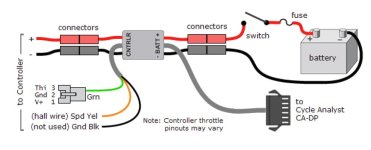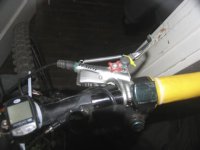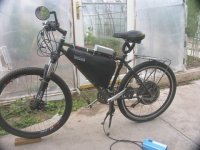DingusMcGee
100 kW
I've never understood the importance of ebrakes when you have hydraulics and a mid drive. Yes I do with a hub motor, but all that hassle to stop the mid drive motor when it's on a freewheel?
Suppose you quickly pull the bakes and do not have ebrake switches but you pull the brakes without releasing the throttle. Freewheels or not [there are 3 of them], they stay engaged if the motor is turning fast enough to keep them engaged and its power goes to the wheel. And since you have pulled the brakes the motor is now running faster than the wheels and thus all the while, while braking, the motor is actively working to keep you going at the throttle setting you hold and you are actively using the brakes to slow yourself down. It is kind of a waste of battery energy and wears out brake pads sooner. I suppose with hydraulics, big rotors and not a very big motor[c-3000] you can compensate for having no ebrake switches and the motor running the wheel by pulling harder on the brake handles when you want to stop.
If you have ebrake switches the throttle signal is set to zero as soon as the switch closes from the brake handle action and the motor is no longer powered.
I disconnect my ebrake switches when riding uphill-steep technical terrain. But I prefer them in town.




